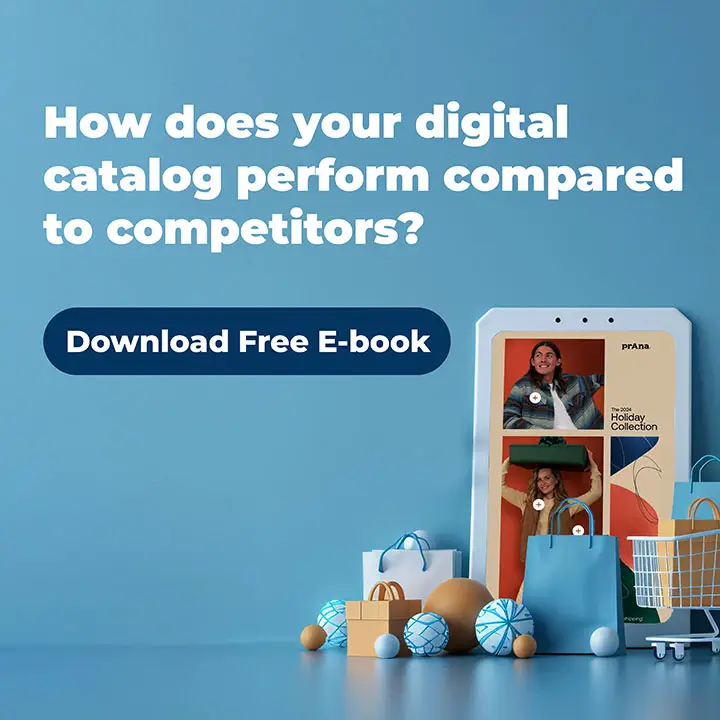The trend of making purchases online is rapidly growing within the B2B sector. B2B eCommerce is now an essential revenue stream for numerous brands and wholesalers. In this guest blog from our partner Pepperi, their team sheds light on the advantages of B2B eCommerce, offering five tips to elevate your business through a B2B Commerce solution.
Gartner’s forecast is eye-opening: by 2025, an estimated 80% of B2B sales interactions between suppliers and buyers will occur via digital platforms. This implies that brands or wholesalers not yet engaged in eCommerce could be significantly disadvantaged.
What is B2B e-commerce?
While often associated with online stores for businesses and individuals, e-commerce has existed since the early 1990s. Simply put, e-commerce refers to business transactions over an electronic network. Early forms of e-commerce included mail-order sales and service providers who could accept credit card payments online.
Nowadays, e-commerce can be accessed through many devices, such as desktop computers, laptops, smartphones, and tablets, giving buyers unprecedented access to shopping online.
In short, e-commerce is about buying and selling goods and services over digital networks (i.e., via websites). The most common types of e-commerce include:
- B2C (business-to-consumer)
- C2C (consumer-to-consumer)
- B2B (business-to-business)
- C2B (consumer to business)
The focus here is on B2B commerce, which involves companies selling products or services directly to other companies rather than individual consumers who buy something online using their credit cards.
B2B e-commerce vs B2C e-commerce
Not every e-commerce platform is designed for business-to-consumer (B2C) transactions. Many are geared towards businesses looking to purchase from other companies (aka B2B). So, how do you know if your e-commerce software is meant for retail or wholesale transactions?
Typically, both platforms have their own suite of features catering to specific types of purchases. If you’re still wondering which option is right for your business, here are a few pointers that may help you decide:
Are there pre-determined prices in place? If so, your platform likely caters more toward larger purchases and wholesale exchanges. If not, it’s probably built with retail in mind.
Does it require an account to use? Many B2B platforms need users to create an account before making a purchase—which means there’s likely some vetting process involved.
Can it integrate with ERP & 3rd-party services like shipping providers and payment gateways? The more bells and whistles available on your e-commerce platform, the better equipped you’ll be when it comes time to start selling online.
Top three challenges facing suppliers in the modern era
1. How do I sell more of my products online?
2. How do I market my brand digitally?
3. How can I get digital experience talent into my organization?
If you are a supplier, you should be familiar with these challenges. The good news is that in 2024, there will be more opportunities for manufacturers and distributors to reach out to B2B customers directly through digital channels and gain exposure. One of those opportunities is e-commerce, which has become one of today’s most effective sales tools. But why would suppliers want to use it? Let’s dive deeper into what B2B e-commerce means and how it could benefit your business.
The benefits of B2B e-commerce
Selling your products online is an excellent way to attract a broad audience and generate more sales. With e-commerce software and services, you can sell more efficiently than ever. Here are just a few benefits:
Perhaps most importantly, buying through a self-service portal gives your customers access to product information, including images, intelligent filters, descriptions, pricing, and promotions—all crucial components in building trust between buyer and seller.
B2B eCommerce provides opportunities for greater efficiency and robustness at all levels of operations. With big data at their fingertips, businesses can make smarter decisions about what products work best for them and have a greater understanding of what their customers are doing at all times, making themselves both more successful and less vulnerable. Repetitive tasks that were previously carried out manually can now be automated to be carried out at speeds faster than ever before while also cutting down on errors and mistakes.
Five tips when choosing a B2B e-commerce solution
- Integrate with your existing tech ecosystem: Before signing on with a B2B e-commerce solution, ensure it’s compatible with your current business applications and technology infrastructure.
- Choose a partner you can trust: If you already have an established e-commerce operation, find out if they are committed to ongoing development and support before deciding on a platform.
- Maintain control over your changing business requirements: Your business priorities are constantly changing, and you need to be able to react quickly. Be sure that the best B2B eCommerce solution is configurable enough and meets these requests for easy changes at every turn.
- Make sure you are offered your own branded app to boost brand identity and improve customer loyalty.
- Don’t forget about reporting: While most B2B e-commerce solutions offer analytics tools, some may not offer enough data points or detailed reports. Ensure any software you choose provides the information you need to track performance.


